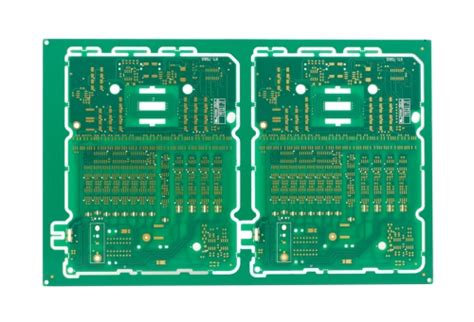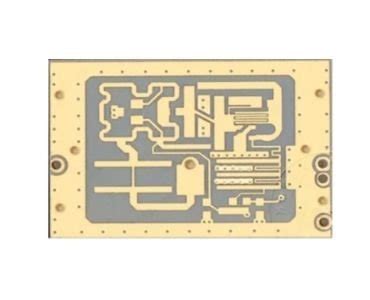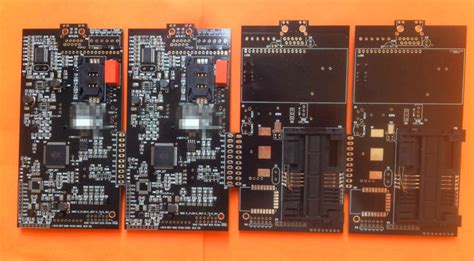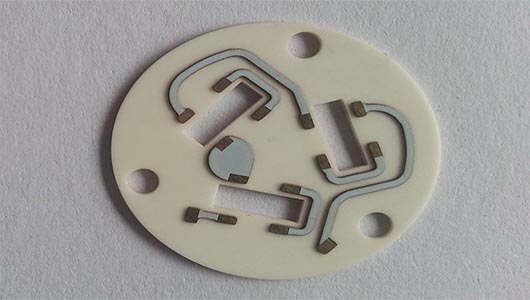High speed pcb drilling spindle
Advances In High Speed PCB Drilling Spindle Technology
The evolution of high-speed PCB drilling spindle technology has been a cornerstone in the advancement of printed circuit board (PCB) manufacturing. As the demand for smaller, more complex, and higher-performance electronic devices continues to grow, the need for precision and efficiency in PCB production has never been more critical. High-speed drilling spindles play a pivotal role in this process, enabling manufacturers to meet stringent industry standards and deliver superior products.
One of the most significant advancements in high-speed PCB drilling spindle technology is the development of spindles capable of operating at extremely high rotational speeds.
Modern spindles can achieve speeds exceeding 300,000 revolutions per minute (RPM), a remarkable feat that allows for the rapid and precise drilling of microvias and other intricate features on PCBs. This capability is essential for the production of high-density interconnect (HDI) boards, which are increasingly prevalent in advanced electronic devices such as smartphones, tablets, and wearable technology.
In addition to higher rotational speeds, advancements in spindle materials and construction have also contributed to improved performance and durability.
The use of advanced ceramics and composite materials in spindle components has resulted in spindles that are not only lighter but also more resistant to wear and thermal expansion. This enhanced durability ensures that spindles can maintain their precision and performance over extended periods, reducing downtime and maintenance costs for manufacturers.
Moreover, the integration of advanced sensor technology into high-speed PCB drilling spindles has revolutionized the way manufacturers monitor and control the drilling process.
Sensors embedded within the spindle can provide real-time data on parameters such as temperature, vibration, and rotational speed. This data can be used to optimize drilling conditions, prevent potential issues before they arise, and ensure consistent quality across production runs. The ability to monitor these parameters in real-time also facilitates predictive maintenance, allowing manufacturers to address potential problems before they lead to costly equipment failures.
Another noteworthy advancement is the development of adaptive control systems for high-speed PCB drilling spindles.
These systems use sophisticated algorithms to adjust drilling parameters dynamically based on real-time feedback from the spindle and the PCB material. This adaptive approach ensures optimal drilling conditions for each specific task, enhancing precision and reducing the risk of defects. Furthermore, adaptive control systems can compensate for variations in material properties, such as hardness and thickness, ensuring consistent performance across different types of PCBs.
The integration of high-speed PCB drilling spindles with automated manufacturing systems has also been a game-changer for the industry.
Automation not only increases production efficiency but also reduces the likelihood of human error, leading to higher-quality products. Automated systems can seamlessly coordinate the operation of multiple spindles, optimizing the drilling process and minimizing cycle times. This level of automation is particularly beneficial for large-scale production environments, where even small improvements in efficiency can result in significant cost savings.
In conclusion, the advancements in high-speed PCB drilling spindle technology have had a profound impact on the PCB manufacturing industry. Higher rotational speeds, improved materials, advanced sensor integration, adaptive control systems, and automation have collectively enhanced the precision, efficiency, and reliability of the drilling process. As electronic devices continue to evolve and demand for more sophisticated PCBs increases, the ongoing development of high-speed drilling spindle technology will remain a critical factor in meeting the challenges of modern electronics manufacturing.
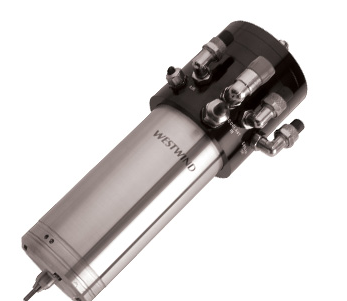
Benefits Of Using High Speed PCB Drilling Spindles In Manufacturing
High speed PCB drilling spindles have become an indispensable component in the manufacturing of printed circuit boards (PCBs), offering a multitude of benefits that significantly enhance production efficiency and product quality. As the demand for smaller, more complex electronic devices continues to grow, the need for precision and speed in PCB manufacturing has never been more critical. High speed drilling spindles address these needs by providing several key advantages that make them a preferred choice in the industry.
One of the primary benefits of using high speed PCB drilling spindles is the remarkable increase in production speed.
Traditional drilling methods often struggle to keep up with the high throughput requirements of modern manufacturing processes. High speed spindles, however, can operate at significantly higher rotational speeds, allowing for faster drilling cycles. This increased speed translates directly into higher production rates, enabling manufacturers to meet tight deadlines and respond more swiftly to market demands. Consequently, the overall efficiency of the manufacturing process is greatly enhanced, leading to reduced lead times and increased profitability.
In addition to speed, precision is another critical factor in PCB manufacturing.
High speed drilling spindles are designed to deliver exceptional accuracy, ensuring that each hole is drilled to exact specifications. This precision is crucial for maintaining the integrity of the PCB, as even minor deviations can lead to functional issues or complete failure of the electronic device. By utilizing high speed spindles, manufacturers can achieve consistent hole quality, which is essential for the reliable performance of the final product. This level of accuracy also reduces the need for rework and scrap, further contributing to cost savings and operational efficiency.
Moreover, high speed PCB drilling spindles offer enhanced versatility, accommodating a wide range of materials and hole sizes.
Modern PCBs often incorporate various substrates, including fiberglass, ceramics, and composite materials, each with unique drilling requirements. High speed spindles are capable of handling these diverse materials with ease, providing manufacturers with the flexibility to produce a variety of PCB designs without the need for multiple specialized tools. This adaptability not only streamlines the manufacturing process but also allows for greater innovation and customization in PCB design.
Another significant advantage of high speed PCB drilling spindles is their contribution to improved tool life and reduced maintenance costs.
The advanced technology and materials used in these spindles result in lower wear and tear on the drilling tools, extending their lifespan and reducing the frequency of replacements. Additionally, high speed spindles often feature sophisticated cooling and lubrication systems that minimize heat generation and friction, further enhancing tool durability. This reduction in tool wear and maintenance requirements leads to lower operational costs and increased uptime, ensuring that manufacturing processes remain efficient and cost-effective.
Furthermore, the integration of high speed PCB drilling spindles into automated manufacturing systems can lead to even greater benefits.
Automation allows for continuous operation with minimal human intervention, maximizing productivity and reducing the potential for human error. High speed spindles are well-suited for integration into automated systems, providing consistent performance and reliability that are essential for maintaining high production standards. This synergy between high speed spindles and automation technology represents a significant advancement in PCB manufacturing, driving further improvements in efficiency and quality.
In conclusion, the adoption of high speed PCB drilling spindles in manufacturing offers numerous benefits, including increased production speed, enhanced precision, greater versatility, improved tool life, and reduced maintenance costs. These advantages collectively contribute to more efficient and cost-effective manufacturing processes, enabling manufacturers to meet the growing demands of the electronics industry while maintaining high standards of quality and reliability. As technology continues to evolve, high speed PCB drilling spindles will undoubtedly play a crucial role in shaping the future of PCB manufacturing.

Maintenance Tips For High Speed PCB Drilling Spindles
Maintaining high-speed PCB drilling spindles is crucial for ensuring optimal performance and longevity. These spindles are integral components in the manufacturing process of printed circuit boards, where precision and reliability are paramount. To achieve consistent results and avoid costly downtime, it is essential to adhere to a comprehensive maintenance regimen.
Firstly, regular inspection of the spindle is necessary to identify any signs of wear or damage.
This includes checking for unusual noises, vibrations, or temperature fluctuations during operation. Such anomalies can indicate underlying issues that, if left unaddressed, may lead to more severe problems. By conducting routine inspections, operators can detect potential faults early and take corrective measures promptly.
In addition to visual and auditory inspections, it is important to monitor the spindle’s lubrication system.
Proper lubrication reduces friction and wear, thereby extending the spindle’s lifespan. Operators should ensure that the lubrication levels are adequate and that the lubricant used is of the recommended type and quality. Over time, lubricants can degrade or become contaminated, so regular replacement is advised. Furthermore, maintaining a clean environment around the spindle can prevent contaminants from entering the lubrication system.
Another critical aspect of spindle maintenance is the alignment and balance of the spindle and its components.
Misalignment can cause uneven wear and reduce the accuracy of the drilling process. Therefore, it is essential to periodically check and adjust the alignment of the spindle to ensure it remains within the manufacturer’s specified tolerances. Similarly, balancing the spindle and its rotating parts can minimize vibrations and enhance performance. Specialized equipment and trained personnel are often required to perform these tasks accurately.
Temperature control is also vital for the proper functioning of high-speed PCB drilling spindles.
Excessive heat can lead to thermal expansion, which may affect the spindle’s precision and cause premature wear. Implementing an effective cooling system, such as air or liquid cooling, can help maintain the spindle at an optimal operating temperature. Regularly inspecting and cleaning the cooling system ensures it operates efficiently and prevents overheating.
Moreover, the electrical components of the spindle, including the motor and control systems, should be regularly checked for signs of wear or damage.
Electrical connections should be secure, and any worn-out or damaged wiring should be replaced immediately. Ensuring that the control systems are functioning correctly is also crucial, as any malfunction can lead to operational errors and potential damage to the spindle.
Preventive maintenance schedules should be established based on the manufacturer’s recommendations and the specific operating conditions of the spindle.
These schedules typically include routine inspections, lubrication, alignment checks, and electrical system evaluations. Adhering to a preventive maintenance plan can significantly reduce the likelihood of unexpected failures and extend the spindle’s service life.
In conclusion, maintaining high-speed PCB drilling spindles requires a systematic approach that encompasses regular inspections, proper lubrication, alignment and balance adjustments, temperature control, and electrical system checks. By following these maintenance tips, operators can ensure that their spindles operate efficiently and reliably, thereby enhancing the overall productivity and quality of the PCB manufacturing process.

Comparing High Speed PCB Drilling Spindles: What To Look For
When comparing high-speed PCB drilling spindles, several critical factors must be considered to ensure optimal performance and reliability. The selection of the right spindle can significantly impact the efficiency and quality of printed circuit board (PCB) manufacturing. Therefore, understanding the key attributes and specifications of high-speed spindles is essential for making an informed decision.
Firstly, the rotational speed of the spindle is a paramount consideration.
High-speed spindles typically operate at speeds ranging from 60,000 to 200,000 revolutions per minute (RPM). The appropriate speed depends on the material being drilled and the diameter of the drill bit. For instance, smaller drill bits require higher speeds to achieve precise and clean holes. Consequently, selecting a spindle with a suitable speed range is crucial for maintaining the integrity of the PCB and avoiding issues such as burr formation or hole misalignment.
In addition to speed, the power output of the spindle is another vital factor.
The power, usually measured in kilowatts (kW), determines the spindle’s ability to maintain consistent performance under varying loads. A higher power output ensures that the spindle can handle more demanding drilling tasks without compromising on speed or accuracy. This is particularly important when working with tougher materials or when performing high-volume production runs. Therefore, evaluating the power requirements based on the specific application is essential for achieving optimal results.
Moreover, the precision and stability of the spindle are critical for ensuring high-quality drilling.
Precision is often influenced by the spindle’s bearing system, which supports the rotating shaft. High-quality bearings, such as ceramic or hybrid bearings, offer superior performance by reducing friction and wear, thereby enhancing the spindle’s longevity and accuracy. Additionally, the rigidity of the spindle housing and the overall build quality play a significant role in minimizing vibrations and maintaining stability during operation. Consequently, investing in a spindle with robust construction and high-precision bearings can lead to better drilling outcomes and extended service life.
Furthermore, the cooling mechanism of the spindle is an important aspect to consider.
High-speed operations generate substantial heat, which can adversely affect the spindle’s performance and durability. Effective cooling systems, such as air or liquid cooling, help dissipate heat and maintain optimal operating temperatures. Liquid cooling, in particular, offers superior thermal management by providing consistent and efficient heat removal. Therefore, assessing the cooling requirements and choosing a spindle with an appropriate cooling solution is crucial for ensuring reliable and continuous operation.
Additionally, the ease of maintenance and availability of spare parts are practical considerations that should not be overlooked.
Regular maintenance is essential for keeping the spindle in optimal condition and preventing unexpected downtime. Spindles that are designed for easy access and straightforward maintenance procedures can significantly reduce the time and effort required for upkeep. Moreover, ensuring the availability of spare parts and technical support from the manufacturer can facilitate quick repairs and minimize production interruptions.
Lastly, the compatibility of the spindle with existing equipment and control systems is a key factor.
Integrating a new spindle into an existing setup should be seamless to avoid costly modifications or disruptions. Therefore, verifying the spindle’s compatibility with the current machinery, software, and control interfaces is essential for a smooth transition and efficient operation.
In conclusion, selecting the right high-speed PCB drilling spindle involves a comprehensive evaluation of various factors, including rotational speed, power output, precision, cooling mechanisms, maintenance ease, and compatibility. By carefully considering these aspects, manufacturers can ensure that they choose a spindle that meets their specific requirements, thereby enhancing the efficiency and quality of their PCB production processes.


